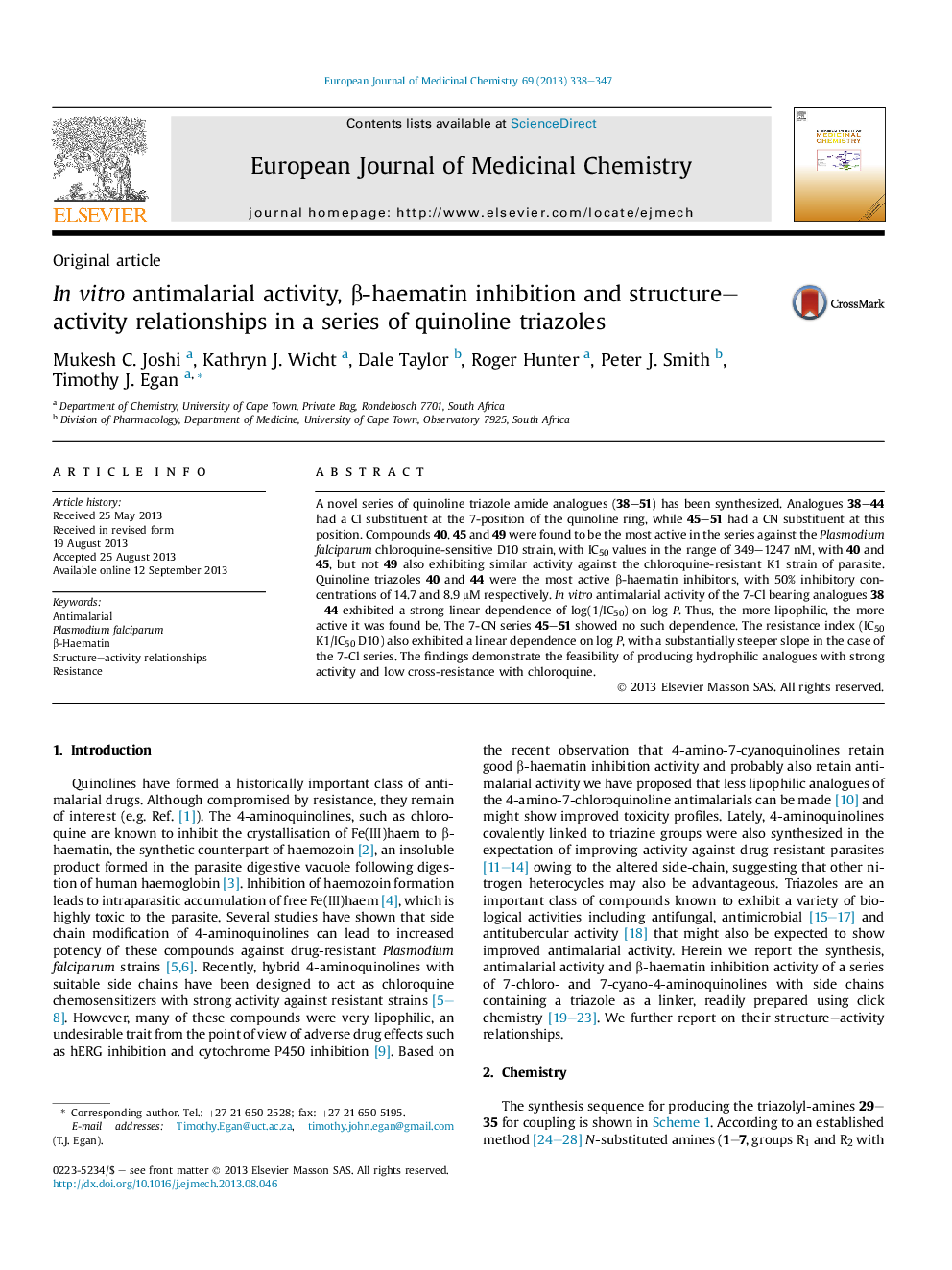| Article ID | Journal | Published Year | Pages | File Type |
|---|---|---|---|---|
| 1399006 | European Journal of Medicinal Chemistry | 2013 | 10 Pages |
•Quinoline-triazoles exhibit in vitro antimalarial activity against Plasmodium falciparum.•4-Amino-7-cyanoquinoline analogues retain activity against P. falciparum.•Quinoline-triazoles inhibit formation of synthetic haemozoin (β-haematin).•7-CN derivatives exhibit reduced cross-resistance with chloroquine.
A novel series of quinoline triazole amide analogues (38–51) has been synthesized. Analogues 38–44 had a Cl substituent at the 7-position of the quinoline ring, while 45–51 had a CN substituent at this position. Compounds 40, 45 and 49 were found to be the most active in the series against the Plasmodium falciparum chloroquine-sensitive D10 strain, with IC50 values in the range of 349–1247 nM, with 40 and 45, but not 49 also exhibiting similar activity against the chloroquine-resistant K1 strain of parasite. Quinoline triazoles 40 and 44 were the most active β-haematin inhibitors, with 50% inhibitory concentrations of 14.7 and 8.9 μM respectively. In vitro antimalarial activity of the 7-Cl bearing analogues 38–44 exhibited a strong linear dependence of log(1/IC50) on log P. Thus, the more lipophilic, the more active it was found be. The 7-CN series 45–51 showed no such dependence. The resistance index (IC50 K1/IC50 D10) also exhibited a linear dependence on log P, with a substantially steeper slope in the case of the 7-Cl series. The findings demonstrate the feasibility of producing hydrophilic analogues with strong activity and low cross-resistance with chloroquine.
Graphical abstractA series of less lipophilic 4-aminoquinoline triazoles are active against chloroquine-sensitive and -resistant malaria parasites.Figure optionsDownload full-size imageDownload as PowerPoint slide
